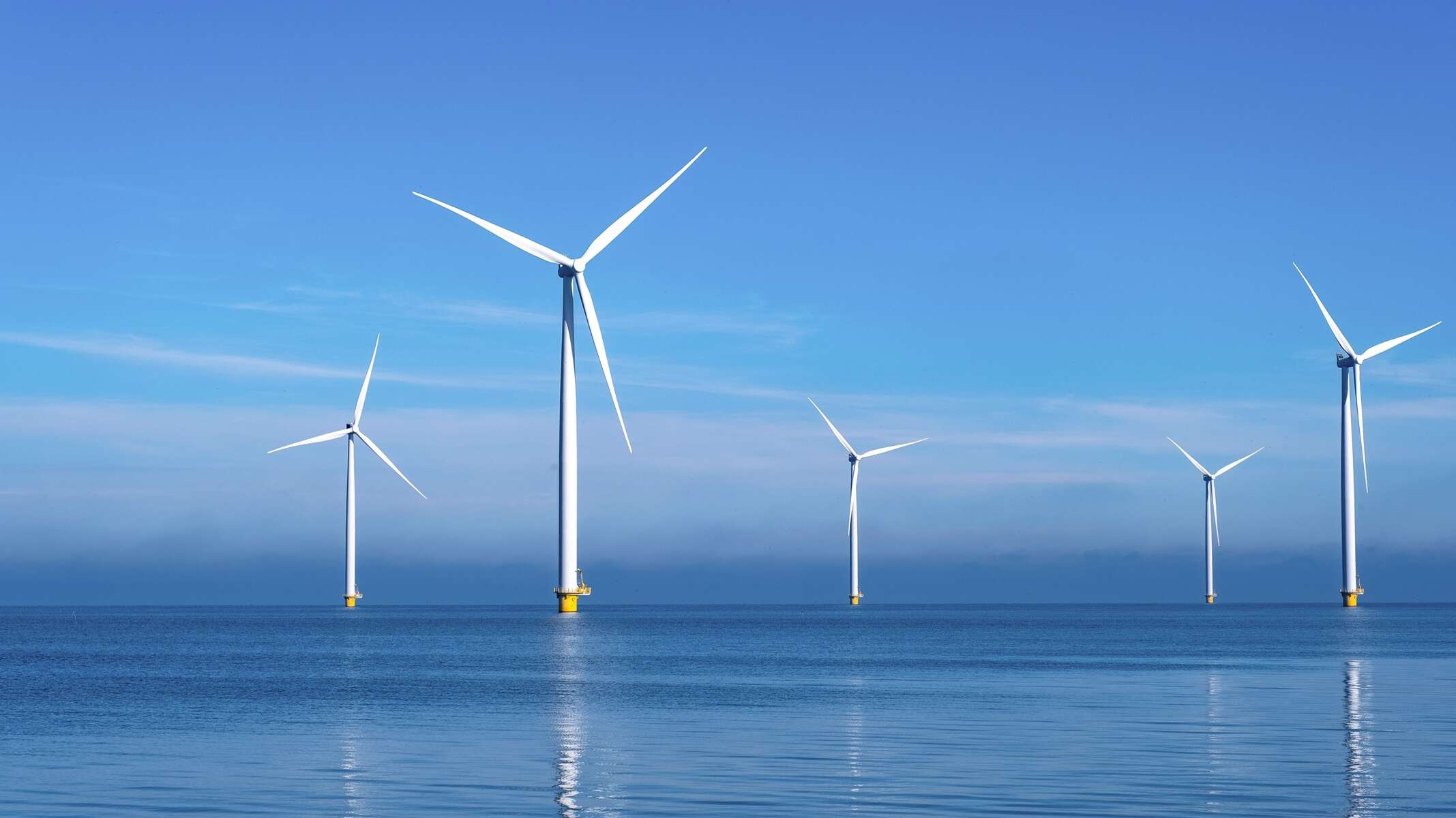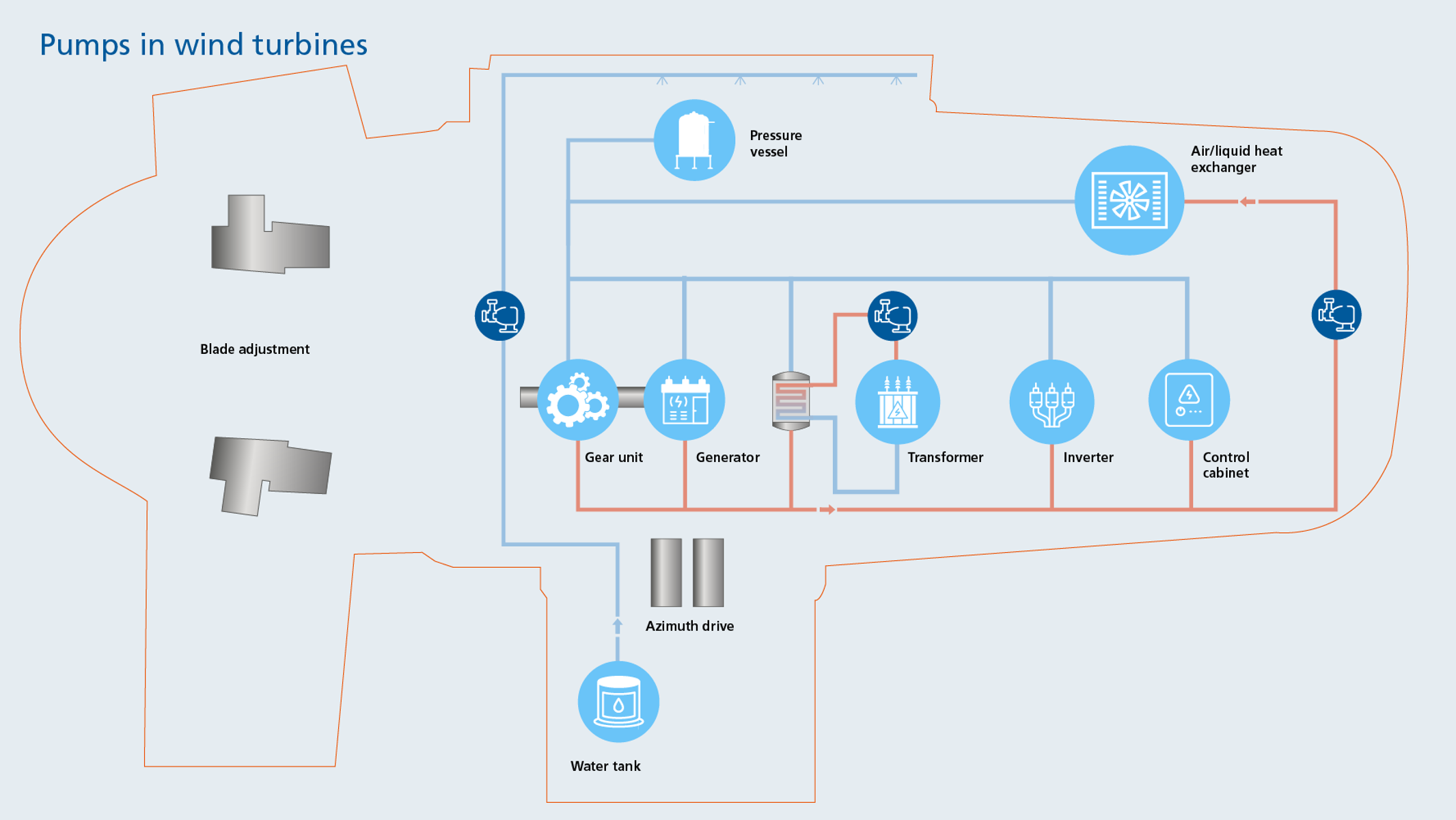
Offshore wind energy: How can we use wind power efficiently?
Pumps for the energy source of the future
Wind energy parks play a decisive role in the transition to sustainable energy supply. What many people don’t realise: These parks could not be operated without the numerous pumps installed to provide cooling and fire protection. With its innovative and reliable pump sets, KSB enables dependable power supply – onshore and offshore.
Offshore wind parks are highly reliable in supplying energy
The term offshore is self-explanatory: Wind parks are located away from the shore, out at sea. In Germany, this would be in the North Sea and Baltic Sea, for example. This brings some decisive benefits(opens in a new tab): The higher speed of wind at sea enables an energy output that is twice as high as that onshore. Out at sea, the wind is also more consistent than on land, which means that offshore farms can generate energy 90 percent of the year.

Offshore wind farms are of unbelievably large dimensions and require the most innovative of technologies: from gigantic rotor diameters to foundations on the seabed weighing several hundred tonnes. A particularly impressive example is one of the largest wind turbines worldwide with a rotor diameter of 220 m. The pumps for its main cooling circuit are supplied by KSB.
Transformer platforms at sea bundle the electricity generated by the individual turbines and transform it to a higher voltage level to ensure almost loss-free transmission through many hundreds of kilometres of submarine cables on the seabed.
Pumps play a decisive role in offshore wind parks
Pumps are an essential component of energy generation in wind farms: They are used in many areas – both for the turbines and the transformer platforms. Here, they particularly serve to cool systems such as gear units, generators and transformers. Wind turbines and transformer platforms have got their own coolant circuits. In turbines, these are cooled by an air/liquid heat exchanger making use of the wind. On the transformer platforms, the temperature of the cooling circuits is maintained by seawater, which is supplied by seawater lifting pumps, such as the UPA pump from KSB(opens in a new tab). Both for turbines and transformer platforms, KSB pumps also ensure the circulation of coolant. Powerful pumps are further needed for fire-fighting systems, for treating seawater and for pressure boosting. In all of these applications it is crucial for the pumps to be reliable even under the most adverse conditions, thus reducing or even eliminating maintenance, repair and life cycle costs.

Pumps in offshore parks have to meet exacting requirements on being robust and reliable, bearing in mind that wind turbines are exposed to extreme conditions. Salty sea air and salt water, strong winds, storms and waves – these are all factors that cause corrosion and wear on components in the long term. Maintenance work will then be required – and this is much more challenging at sea than on land. Wind parks are often difficult to reach, especially in weather conditions that can pose a danger to people. But every minute of standstill means the plant is not economical and is costing money. What is the key to keeping maintenance work down? Reliable technology that is efficient, wear-resistant or even non-wearing. Meeting these criteria, KSB has got a large range of innovative pumps on offer.



